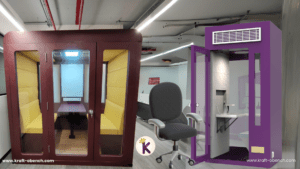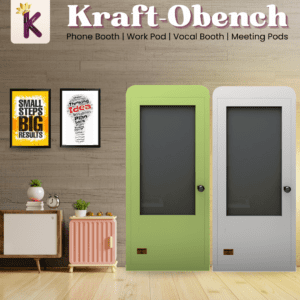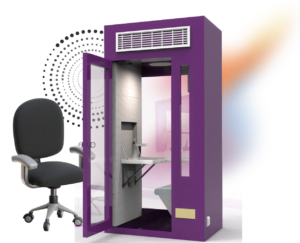Managing remote teams comes with its own set of issues, which necessitates its own set of solutions. Hybrid teams, which include both remote employees and those who are physically present in the office, may help firms cut expenses, boost productivity, and become more adaptable in the face of adversity. However, managers that are being trained within the confines of the traditional workplace are facing new obstacles. The reason being, the result of this new structure. Furthermore, the global crisis will forever alter the way we work, and working from home inside soundproof office pod for home by Kraft-Obench will become the new standard. Continue reading to learn about the five most frequent obstacles that even experienced remote team managers face.
1. Communication & Connectivity:
It’s simple to keep up the speed and debate ideas as employees arrive at work every morning, whether before meetings or around the water cooler. However, in distant work contexts, spontaneous face-to-face interaction is lost. Any form of communication or involvement must be deliberate and well-planned. Workplace social engagement and interpersonal ties have been shown to increase productivity. To explain this phenomenon, most studies point to the impacts of social facilitation.
2. Productivity:
Although most remote workers claim that working from home increases their productivity, some people arejust simply not built for it. They may require more assistance or novel methods of tracking time and progress to stay on track. Predictability is essential for workplace productivity. Define roles and duties, set clear schedules, and keep everyone informed about who is doing what to create a framework to increase productivity.
3. Trust Building:
For distant managers and team members, establishing trust is tough. Transparency may assist all parties to create trust, especially while working remotely. In addition, a lack of team spirit is caused by the inability to trust. They reduce the desire to interact, have an impact on empathy, stifle initiative, and so on. In the end, a lack of trust has an impact on productivity and collaboration. Another significant problem in managing distant personnel is establishing trust through virtual methods.
4. Collaborations:
Collaboration from diverse places is the most prevalent problem that remote teams cite in research. When a group of designers is dispersed throughout the country or the globe, how can they collaborate on the same project? When team members are in the same office, they may freely engage with papers, things, projects, and one another.
5. Company’s Culture:
Most businesses have a vision of how they want to operate, what they value, and how they want to be seen. This is something you’ll almost certainly address during your interview and onboarding processes. When confronted with this culture, most employees will either fit in or seek a job that better meets their needs. Working alone and remotely might make it tough to disseminate your company’s culture.
Summing Up
Although hybrid team management differs from traditional management in certain ways, many of the same ideas apply. Effective management has always required good communication; the main change in hybrid teams is that communication has gone online. Simply follow up with team members to learn about their issues, optimize processes and operations as needed, and lead from the front to set a good example for your team.
However, for better productivity and creativity, a soundproof office pod for home has come into existence that has not only helped working professionals but also creators or content creators that require a total soundproof office pod with no noise.








